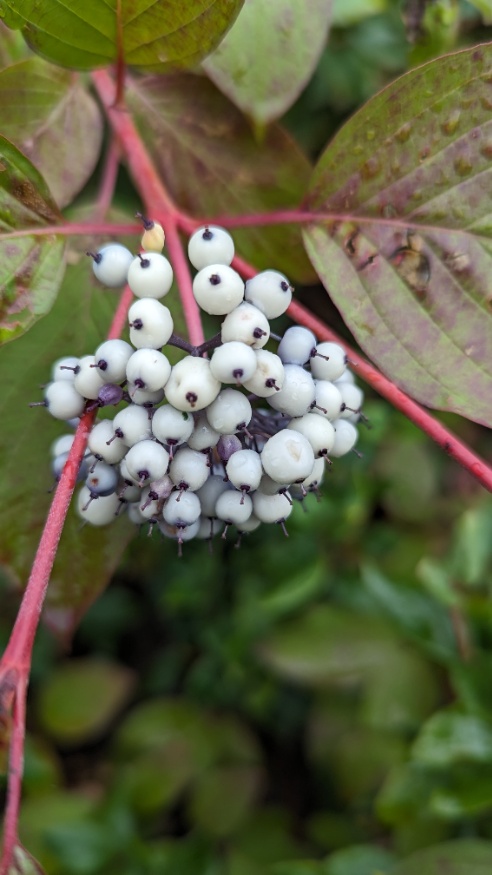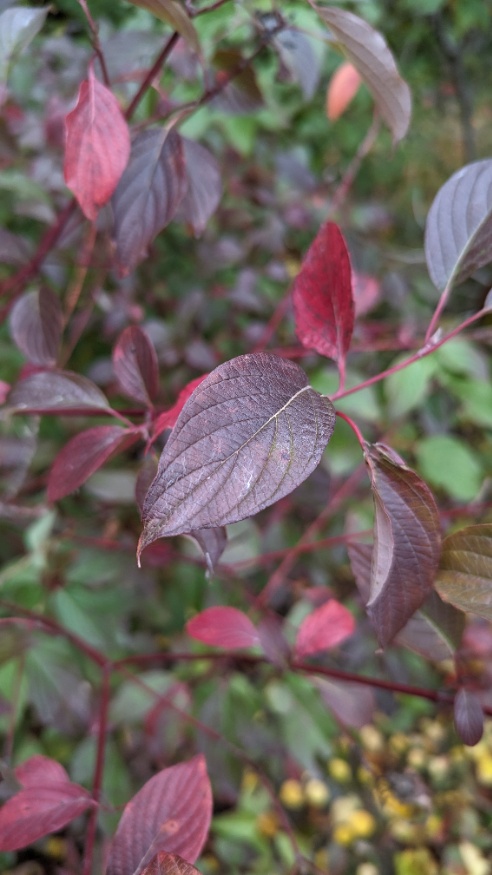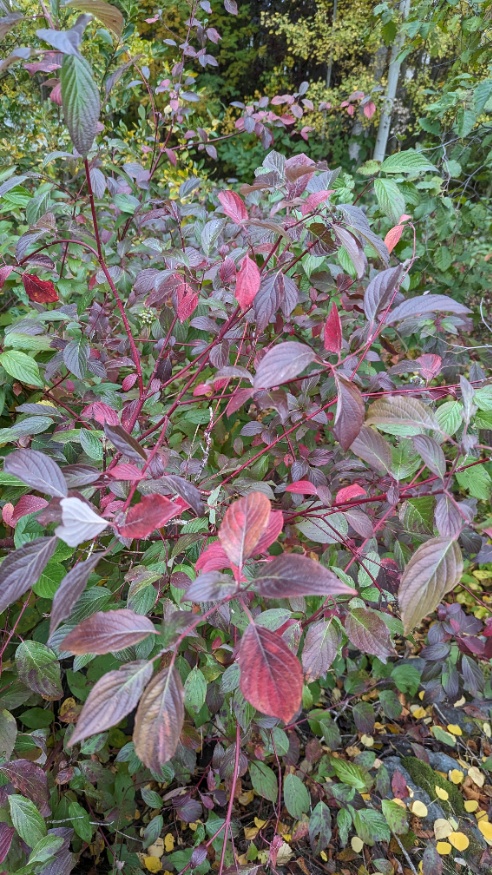About
Red-osier dogwood, Cornus stolonifera (formerly C. sericea) is a medium to large shrub native to North America. Its the most widespread species of the native dogwoods. The shrub provides four seasons of interest with vibrant dark red winter twigs, flower clusters and white berries. The shape is round and multistemmed; habit is vigorous, forming thickets from stolons, hence the name 'stolonifera'.
Flat clusters of small Yellowish white flowers are borne late May to early June, attracting bees and other insects for pollination. Flowering is best in full sun but the shrub tolerates some shade. In late summer, clusters of blueish white fruit appear and attract many bird species.
As with other dogwoods, oval leaves have prominent veins that follow the leaf outline (arcuate). The colour is green, turning reddish purple in the fall. Twigs are smooth with a unique and attractive red colour; showy in winter. Its dense branching serves as wildlife habitat and prominent browse for deer and rabbits. The name osier is French for 'willow shoot' due to its smooth colorful twigs.
The Shallow, dense root system of red-osier dogwood stabilizes riverbanks and can be planted on farm edges to reduce erosion and block snow. The shrub has been used by natives as a tobacco substitute; twigs have also been used in weaving and basketry.
References
Coublar, S., Canadian Wildlife Federation. Retrieved from https://cwf-fcf.org/en/resources/encyclopedias/flora/dogwood.html
Government of Canada. (2015). Red-osier dogwood. Retrieved from https://www.agr.gc.ca/eng/agriculture-and-the-environment/agricultural-practices/agroforestry/shelterbelt-planning-and-establishment/selecting-trees-and-shrubs-species/red-osier-dogwood/?id=1345845710463
The Morton Arboretum. (n.d.). Red-osier dogwood. Retrieved from https://www.mortonarb.org/trees-plants/tree-plant-descriptions/red-osier-dogwood
U.S. Forest Service. (n.d.). Red Osier Dogwood. Retrieved from https://www.fs.fed.us/wildflowers/plant-of-the-week/cornus_sericea.shtml
Growing From Seed
Growing from seed is one of the most economical and satisfying ways to build a native plant garden. The table shows brief planting instructions, including how long and what kind of stratification this plant needs. For further information on stratification and seed preparation please refer to our article: Preparing To Grow Wild Plant Seeds
| Seeds/Packet | 30+ |
|---|---|
| Seeds/Gram | Coming soon... |
| Cost/Gram | $Price coming soon... |
| Dormancy Treatment | Cold Moist Stratification |
| Seeding Instructions | Soak seeds for 24hrs, then cold moist stratify for 3 months. |
Growing From Plants
Seedlings are a more economical option than established plants and an easier start than growing from seed. 4 pack plants indavidually have and approximate 2" square root ball. We also have large soil block plants, which are a bit more established than the seedlings. These grow as approximate 4" blocks. Plants do surprizingly well in the mail but need special care upon arrival. Please see Planting Mail Order Seedlings for information on how to plant and care for seedlings.
Shipping
We currently ship seeds to all Canadian provinces and ship plants just within the provinces of British Columbia and Alberta. Seeds ship year-round and usually take a few days (or longer if you are ordering from a distant province). It usually takes 2-5 business days in the mail for plant orders once shipped. Plants are generally available from May to September and can be reserved during off season; Shipping costs are calculated during checkout. Seed orders over $100 ship free! See Shipping for more details.




